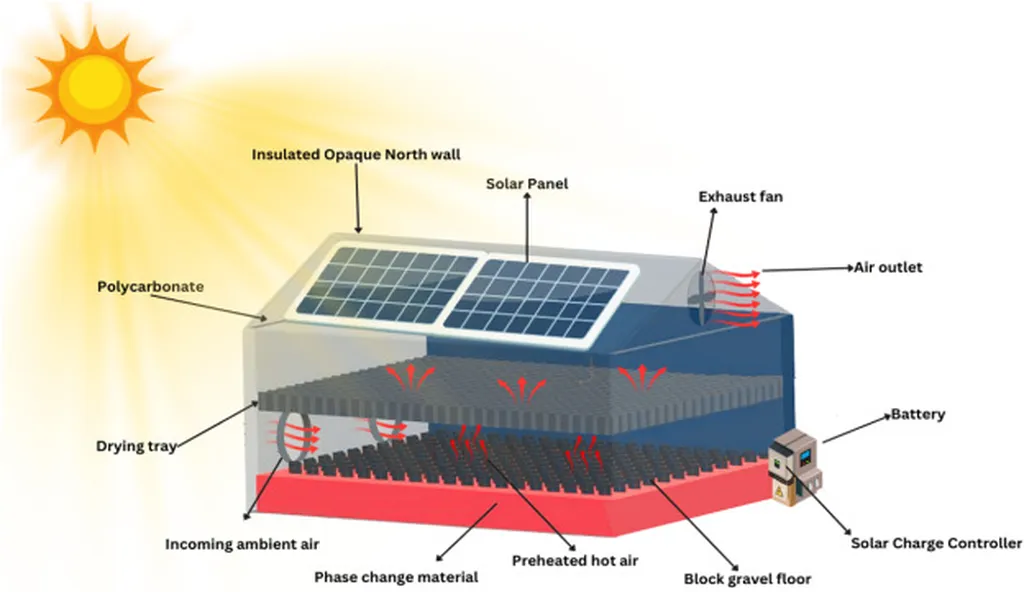In the quest to reduce agricultural post-harvest losses and enhance sustainable food processing, a groundbreaking study has emerged, offering a promising solution for black date drying. Published in *Results in Engineering*, the research, led by Rajamurugu N. from the Department of Aerospace Engineering at KCG College of Technology in Chennai, India, compares three solar-based drying methods and introduces an innovative integration of phase change material (PCM) with solar chimney drying, coupled with machine learning (ML) for performance prediction.
The study reveals that the PCM-integrated solar chimney dryer significantly outperforms conventional methods. “The PCM-integrated solar chimney achieved peak thermal and drying efficiencies of 49% and 59%, respectively,” Rajamurugu explains. “This is a substantial improvement over open sun drying, which only achieved 20% efficiency, and the standalone solar chimney, which reached 41%.” The latent heat storage of PCM extends the drying process into the late hours, maintaining 25% efficiency at 16:00 h, compared to just 11% under open sun drying.
The research also employed ML models to predict and optimize system performance. Among the tested models—multilayer perceptron (MLP), random forest (RF), and support vector regression (SVR)—the MLP demonstrated the highest predictive accuracy. “The MLP model showed remarkable accuracy, with an RMSE of 0.85 and an R² value of 0.92 during training, and an RMSE of 1.10 and an R² value of 0.90 during testing,” Rajamurugu notes. Feature importance analysis identified solar irradiance and airflow as dominant parameters governing drying performance.
The integration of PCM-based thermal management with AI-driven prediction presents a scalable, energy-efficient drying solution. This innovation has significant commercial implications for the agriculture sector, particularly in regions with abundant solar resources. By mitigating post-harvest losses and enhancing the efficiency of food processing, this technology supports global initiatives on sustainable food processing and renewable energy utilization.
The study’s findings pave the way for future developments in the field. As Rajamurugu suggests, “This research opens up new possibilities for integrating advanced materials and AI technologies in agricultural processing.” The combination of PCM and ML models could be applied to other drying processes, potentially revolutionizing the way we approach food preservation and processing.
In conclusion, this research offers a glimpse into the future of sustainable agriculture, where innovative technologies and data-driven approaches converge to create efficient, eco-friendly solutions. As the world grapples with the challenges of climate change and food security, such advancements are not just beneficial but essential.

